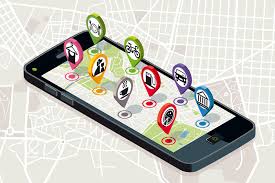Have you ever been lost in a remote location? Nothing but a stretch of dry land for miles? If you have experienced this, you will greatly appreciate the Location based services (LBS), a product of recent technology. The services offered utilize a common piece of technology that records the geographical location from the user’s mobile device. This piece of data is converted to information by integrating user requirements and geographical locus.
Based on the location of the user, the service offers information/advertisement/entertainment. For example, if you were at the beach, the LBS services would offer you recommendations to a hotel nearby or a retail store that offers sunscreen. The LBS rely heavily on the user’s location. As it is only obtained from a GPS-enabled mobile phone, the technology behind the service provider revolves around the location of the user and takes into account the device’s geographical location. LBS typically provide information or entertainment.
How do LBS services work?
Retrieving the location of a user via a mobile phone involves two methods, the first being identification of the mobile phone network. The network plays a major role as the cellular ID can be used to backtrack the location of the base transceiver station (BTS). The BTS is the core of every cellular communication made using the mobile phone. Alternatively, the other method involves the use of GPS satellites. This is the most accurate method and is more popular when compared to the BTS location. With GPS-enabled smart phones available in the market, it is easier to locate a user as the mobile acts as a short-range location beacon.
Applications of LBS
There are numerous applications to LBS for the service providers as well as partner software-development companies. The applications can be classified into two types, Push and Pull. In the push LBS service, the service provider pushes the information to the user, without any prior request. This is done instantly and only requires the user to be registered on the network. On the other hand, the Pull LBS service, the user receives the information upon request, in a way, the user pulls the service and information from the provider only upon request.
• Provide location of retail stores
• Marketing for nearby companies
• Real-time solution to queries
• Recommendations for travel, stay, food, etc when on a trip
• Assistance when on the road: Nearest gas station
• Monitoring of workforce
• Management of workforce
• Courier delivery
Uses of location-based services
Companies have found several ways to use a device’s location:
- Store locators. Using location-based intelligence, retail customers can quickly find the nearest store location.
- Proximity-based marketing. Local companies can push ads only to individuals within the same geographic location. Location-based mobile marketing delivers ads to potential customers within that city who might actually act on the information.
- Travel information. An LBS can deliver real-time information, such as traffic updates or weather reports, to the smartphone so the user can plan accordingly.
- Roadside assistance. In the event of a blown tire or accident, many roadside assistance companies provide an app that allows them to track your exact location without the need for giving directions.
- Mobile workforce management. For logistics-dependent companies that employ individuals out in the field or at multiple locations, an LBS allows employees to check in at a location using their mobile device.
- Fraud prevention. An LBS creates another level of security by matching a customer’s location through the smartphone to a credit card transaction. Tying the smartphone’s location to a credit card allows you to flag transactions made across several geographic locations over a short time.





